Monuments of Santos - City Center
14
Monuments
1908
First Inaguration
2022
Last Inauguration
26.2 feet
Most Tall
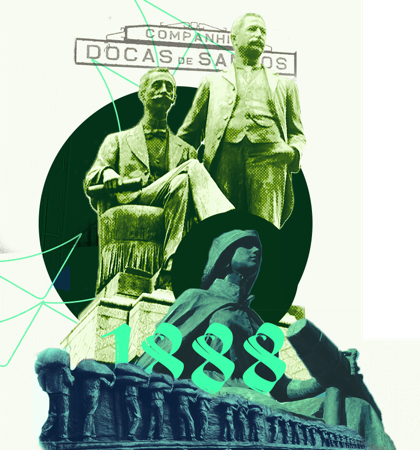
Monument
Graffée&Guinle
On November 17, 1926, the Santos Port Authority (Companhia Docas de Santos) requested permission from then-Mayor José de Souza Dantas to erect a monument honoring the entrepreneurs Graffée and Guinle, who were responsible for the construction of the port at the end of the 19th century.
Decree No. 9,979, dated July 12, 1888, which formalized the contract for the construction of the wharf and operation of the port for a period of 39 years, was signed by Princess Isabel.
Two years later, on November 7, the contract was extended to 90 years.
The first section of the wharf, measuring 260 meters, was built between Rua Braz Cubas (Braz Cubas Street) and the area in front of the São Paulo Railway Station (Valongo) and was inaugurated on February 2, 1892, with the docking of the English ship Nasmyth from Liverpool (UK).
Thus, Santos became the first organized port in the country.
The monument to Graffée and Guinle was erected on the site of the old warehouses, where the first shipments were made. The location also once housed the Navy Arsenal, responsible for building boats and ships.
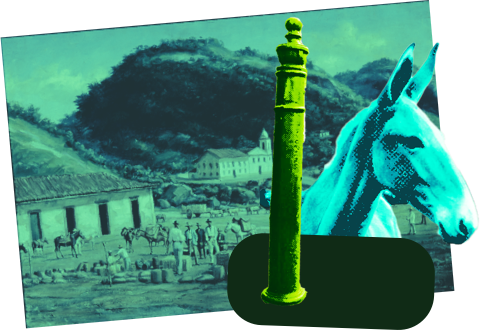
Metal Column
The metal column is the last remaining vestige of the mule era in Santos. This piece was originally part of an old drinking fountain where mules and horses quenched their thirst after transporting carts loaded with coffee and other goods to the port, arriving in Santos via the São Paulo Railway.
Years later, the metal column was used solely for tethering animals.
In 1998, the column was removed by the City Hall during the area's redevelopment. However, thanks to the mobilization of local merchants, led by Antônio Andrade and the newspaper A Tribuna, the piece was returned to its original location.
Scupltor
Desconhecido
Materials
Iron
Height
1,36 meters
Unveiling
Seculo XVII
Local
Praça Antônio Teles
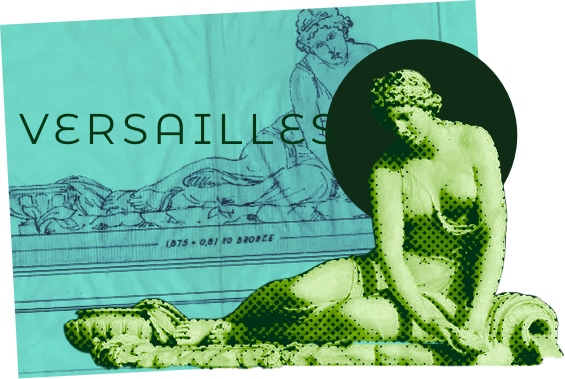
The Nymph with the Shell
The sculpture is a replica of the statue located in the Gardens of the Palace of Versailles (France), created by the 17th-century sculptor Antoine Coysevox.
It was inaugurated on January 26, 1939, to commemorate the first centenary of Santos’ elevation to city status, along with the inauguration of the José Bonifácio Palace, now the seat of the City Hall.
The statue of the nymph is a representative version of the Naiad nymphs, who, according to Greek mythology, inhabit fountains and rivers.
Sculptor
Antoine Coysevox
Materials
Bronze (estátua) e granite (pedestal)
Height
1,38m
Unveiling
Seculo XVII
Local
Praça Mauá
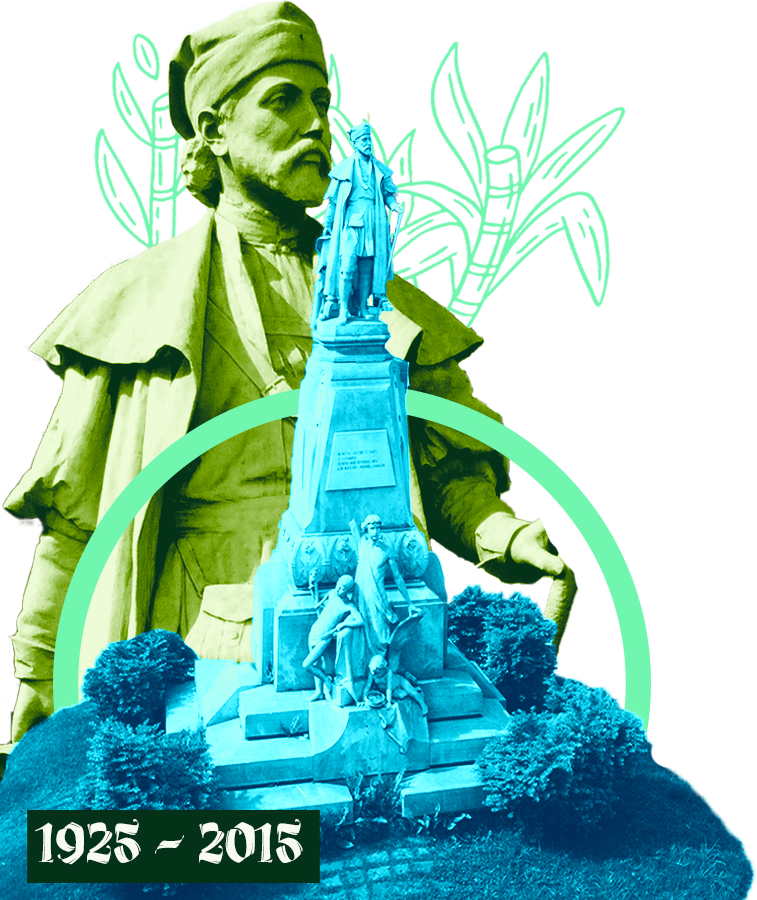
Bras Cubas
The metal column is the last remaining vestige of the mule era in Santos. This piece was originally part of an old drinking fountain where mules and horses quenched their thirst after transporting carts loaded with coffee and other goods to the port, arriving in Santos via the São Paulo Railway.
Years later, the metal column was used solely for tethering animals.
In 1998, the column was removed by the City Hall during the area's redevelopment. However, thanks to the mobilization of local merchants, led by Antônio Andrade and the newspaper A Tribuna, the piece was returned to its original location.
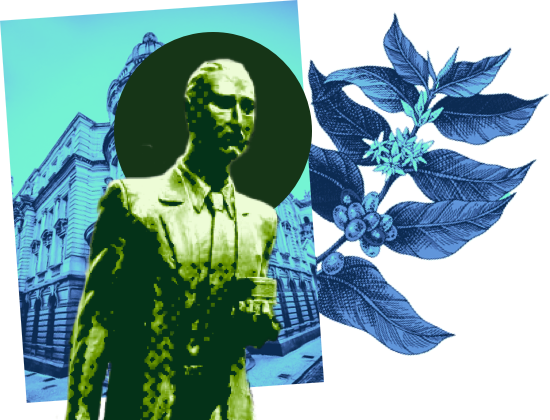
Coffee Broker
The Coffee Broker sculpture represents coffee graders, exporters, brokers, and all those who worked handling coffee sacks.
Many veteran professionals from the coffee trade pay tribute to this statue, which celebrates their legacy through this artwork.
Sculptor
Daniel Gonzalez
Materials
Resina
Height
1,90m
Unveiling
24 de Junho de 2012
Local
Rua XV

Ariosto Guimarães
Lawyer and professor Ariosto Pereira Guimarães was a staunch defender of equal rights and worked tirelessly for the city of Santos.
Born in Campinas (São Paulo State) on February 10, 1897, he moved to Santos with his family at the age of two.
He graduated from the Escola Normal Secundária de São Paulo in 1915 and earned his Law degree from the Faculdade do Largo de São Francisco (São Paulo) three years later.
An active participant in cultural and political movements, especially during the 1930s and 1940s, he was persecuted and imprisoned for over a year by the Getúlio Vargas government.
He taught at the Law School of the Catholic University of Santos (Universidade Católica de Santos).
He passed away in Santos on November 17, 1994.
In recognition of his significant contributions, his name was chosen as the patron of the Academic Directory of the Universidade Metropolitana de Santos (Unimes) and also names the viaduct at Km 65 of the Via Anchieta (SP-150).
Sculptor
Luis Garcia Jorge
Materials
Bronze e Concreto
Altura
2,40m
Unveiling
26 de abril de 1999
Local
Praça José Bonifácio
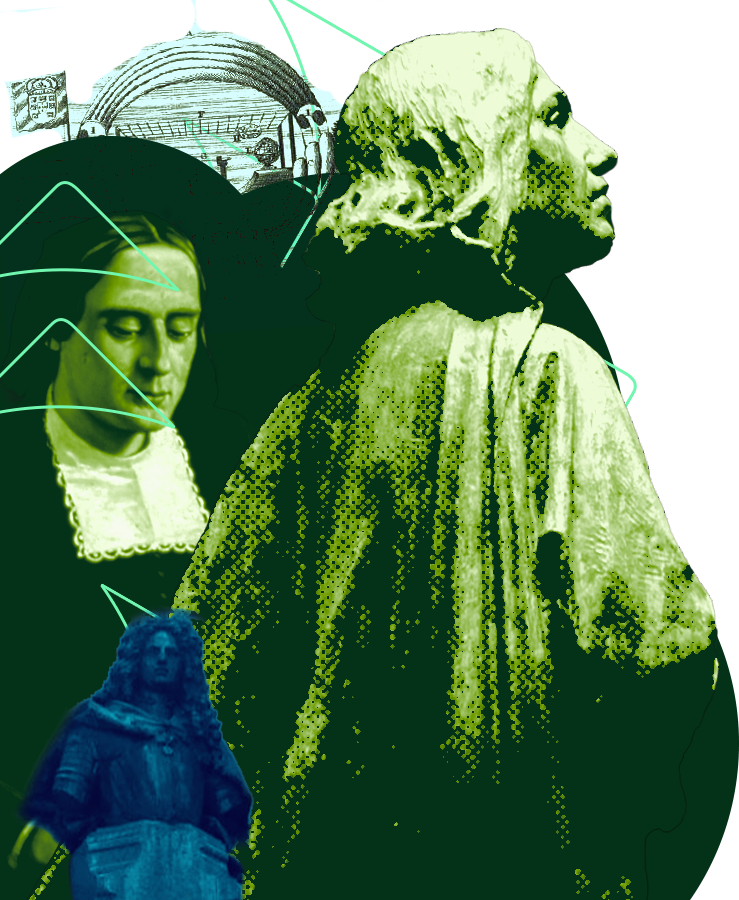
Bartolomeu de Gusmão
Inventor of the hot air aerostat, which earned him the nickname "Flying Priest," Bartolomeu de Gusmão was born in Santos in December 1685.
At the age of 15, he traveled to Portugal, where he graduated in Religious Law and was ordained as a Jesuit priest. Upon returning to Brazil, he dedicated himself to his inventions.
His first invention, in 1707, was a lifting pump to supply water to the Jesuit college in Bahia.
In August 1709, Bartolomeu conducted the first demonstration of the Passarola before the Portuguese court, but the balloon caught fire and failed to lift off.
In a second attempt, the aerostat rose 4 meters, and during the third, on August 8, 1709, it successfully flew before the king and queen.
He continued to carry out several successful experiments, but after being persecuted by the Inquisition, he fled to Spain, where he died on November 18, 1724.
In 2024, on the occasion of the 280th anniversary of his death, his ashes were exhumed and brought back to Brazil. They are now housed in the crypt of the Sé Cathedral in São Paulo.
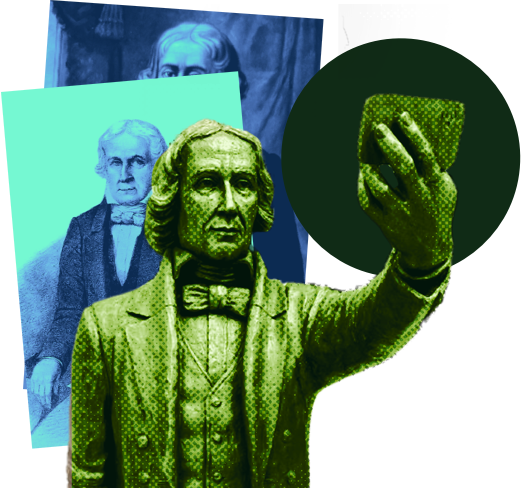
Boniselfie
The honored figure, José Bonifácio de Andrada — known as the Patriarch of Brazilian Independence — is represented in life size, allowing tourists to take selfies with one of Brazil’s historic icons.
The monument also references José Bonifácio’s connection to the discovery of lithium, an essential material for manufacturing batteries used in electronic devices such as cell phones.
Sculptor
Leo Santana
Material
Bronze
Height
1,60m
Unveiling
07 de Setembro 2022
Local
Praça dos Andradas

Molecadinha
The sculpture represents four boys and four girls holding hands, depicted at life size in a circle, suggesting a traditional children's ring game. The piece weighs 1.5 tons.
Sculptor
RICA - Ricardo Campos Mota
Material
Aço
Height
1,35m
Unveiling
17 de outubro de 2000
Local
Praça dos Andradas
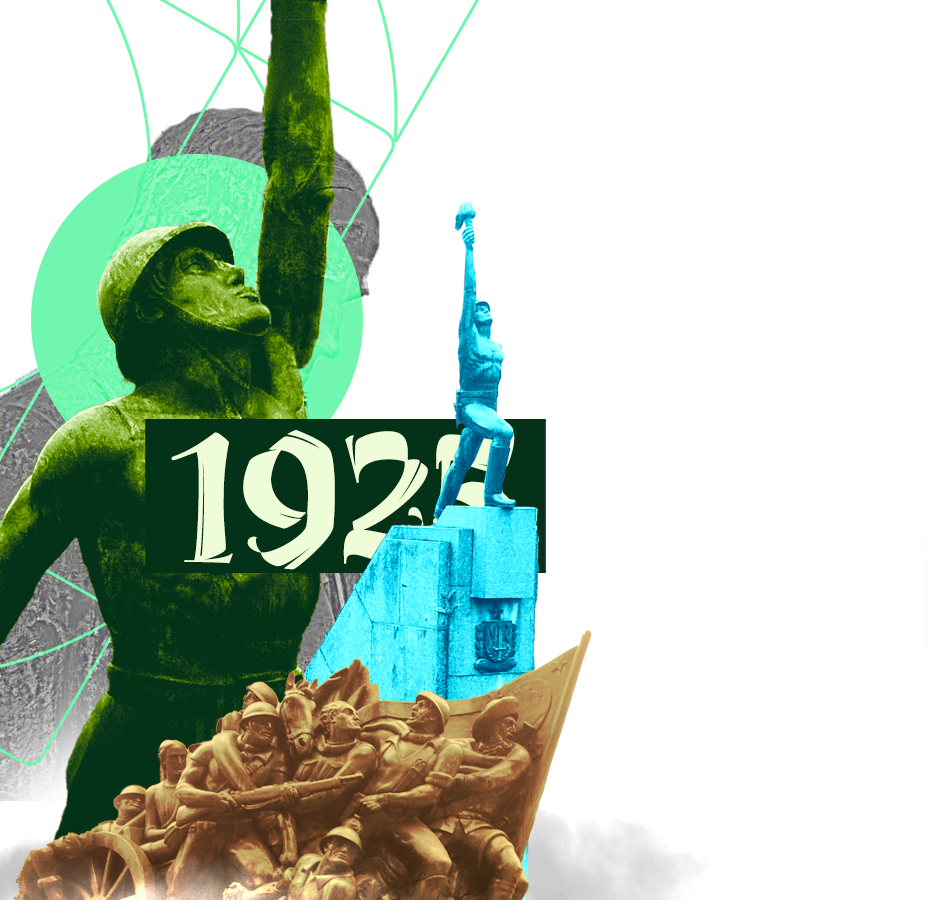
Filhos dos Bandeirantes
The armed movement that took place in Brazil between July and October 1932 aimed to overthrow the provisional government of Getúlio Vargas and to establish a new Constitution. The previous Constitution, dating from 1891, had been nullified by the 1930 Revolution.
Following the end of the Revolution, the city of Santos mobilized to construct a monument honoring the sons who died for the ideals of the Fatherland.
In 1935, the Executive Commission selected the Mausoleum project through a public competition, the notice for which had been published the previous year.
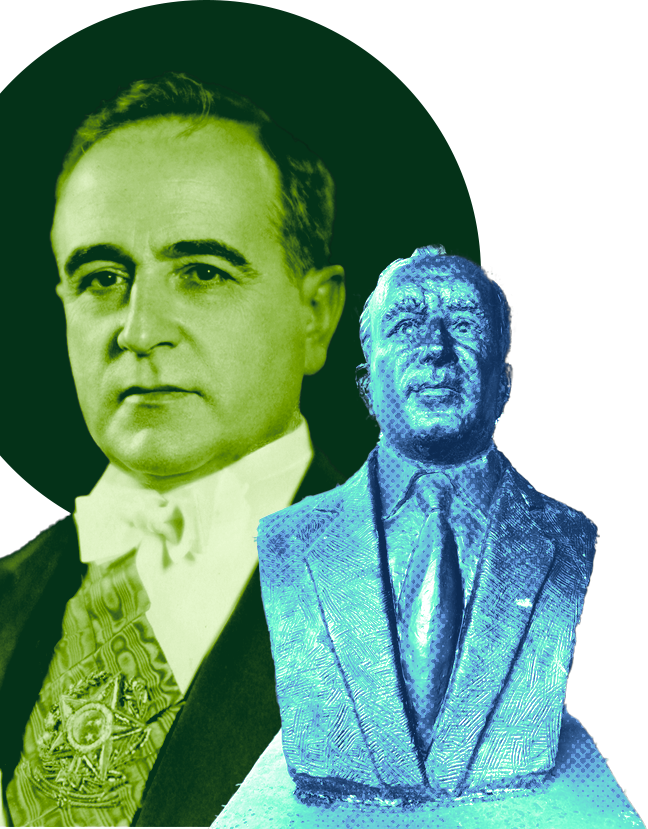
Getúlio Vargas
President of Brazil on four occasions between 1930 and 1954, Getúlio Dornelles Vargas was born in São Borja (Rio Grande do Sul) on April 19, 1883. One of the leaders of the 1930 revolutionary movement, he assumed the presidency of the Provisional Government that same year, remaining in office until the promulgation of the 1934 Constitution.
Elected by the National Congress, he led the Constitutional Government from July 17, 1934, to November 10, 1937. Vargas promulgated a new Constitution, establishing the regime known as the Estado Novo (New State), and remained in the presidency until 1945, when he called for new elections. However, shortly before the elections, on October 29, 1945, he was deposed by the Armed Forces.
He returned to the presidency on January 31, 1951, through a popular vote, but did not complete his term, taking his own life on August 24, 1954, at the Catete Palace, the seat of the government in Rio de Janeiro.
Sculptor
Luis Garcia Jorge
Material
Fibra (herma) e granito (pedestal)
Height
1,90 m
Unveiling
24 de agosto de 1955
Local
Praça dos Andradas
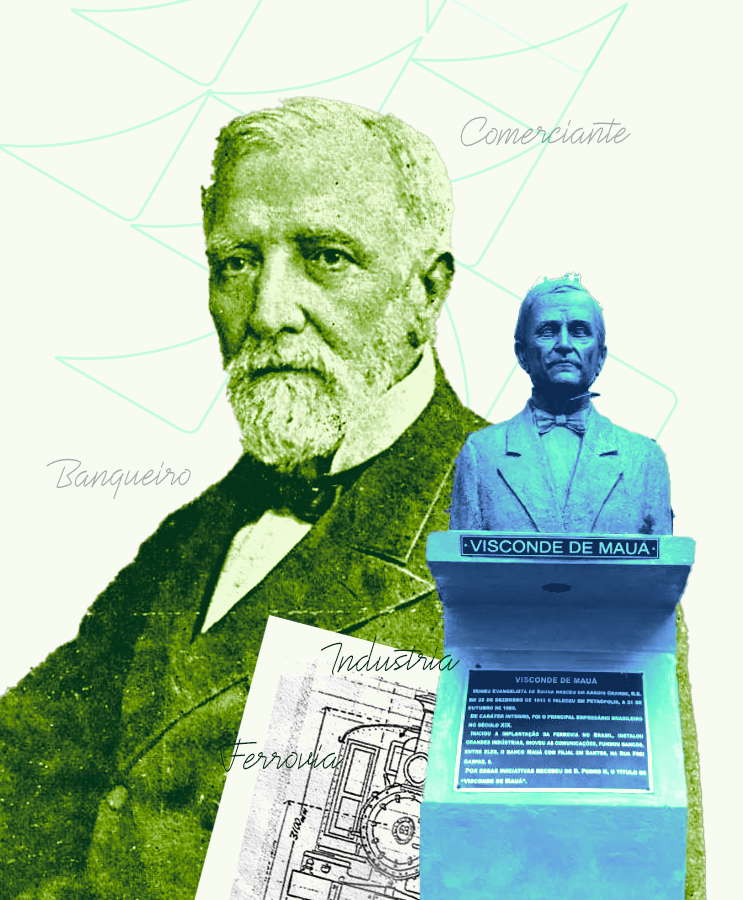
Viscount of Mauá
Born on December 28, 1813, in Arroio Grande (Rio Grande do Sul), Irineu Evangelista de Souza left a legacy of significant achievements for Brazil. He built ships in national shipyards and constructed the first railroad in Brazil, inaugurated on April 30, 1854, an initiative that earned him the title of Baron of Mauá.
He inaugurated the telegraph system and established a water supply and gas lighting network in Rio de Janeiro. Although he faced bankruptcy, he later recovered and paid all his debts.
In Santos (São Paulo), he opened a branch of Banco Mauá at No. 6 Frei Gaspar Street, where the now-defunct Hard Rand Import and Export Company later operated.
Sculptor
Luis Garcia Jorge
Materiais
Bronze(bust) e pedestal (concrete)
Height
1,90 m
Unveiling
5 de dezembro de 1997
Local
Praça Mauá
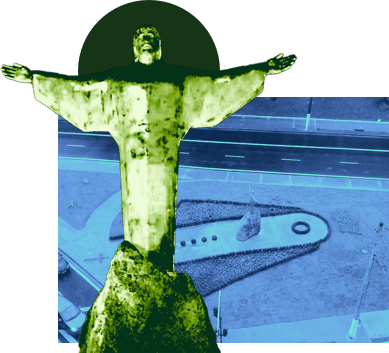
Christ the Redeemer
The statue is a smaller-scale replica of Christ the Redeemer, inaugurated on October 12, 1931, at the top of Corcovado Mountain in Rio de Janeiro.
The piece in Santos was originally crafted for the old Church of Nossa Senhora Aparecida to be placed at the top of its tower.After the demolition of the old church to make way for the construction of a new one, the statue was relocated to its current location in the square on September 26, 1992.
Sculptor
Escultura Labor
Materials
Alvenaria revestida de pedra
Height
5m
Unveiling
16 de setembro de 1937
Local
Praça Lions
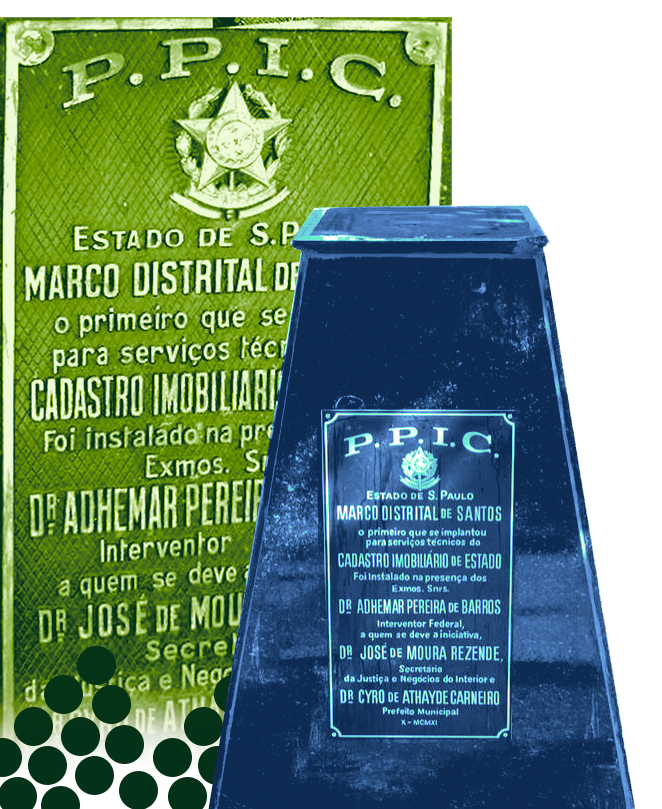
District Landmark
The District Landmark of Santos — also known as the Zero Milestone — was the first to be implemented for real estate registration purposes in the State of São Paulo.
It serves as a reference point for the city’s planimetric surveys and general geodetic measurements, as well as for the topography services of Santos.
It is connected to the state’s triangulation network and to the national reference system through the Monte Serrat vertex.
The geographical coordinates of the District Landmark are as follows: longitude 46° 19’ 43’’ west of Greenwich; latitude 23° 56’ 03’’ south; altitude 4.445 meters above sea level.
Escultor
-
Materials
Black granite
Altura
1,20 m
Inauguração
12 de outubro de 1940
Local
Praça Mauá